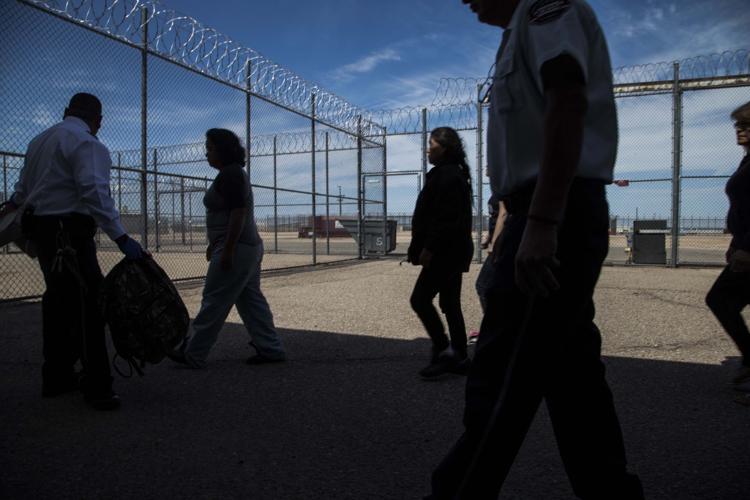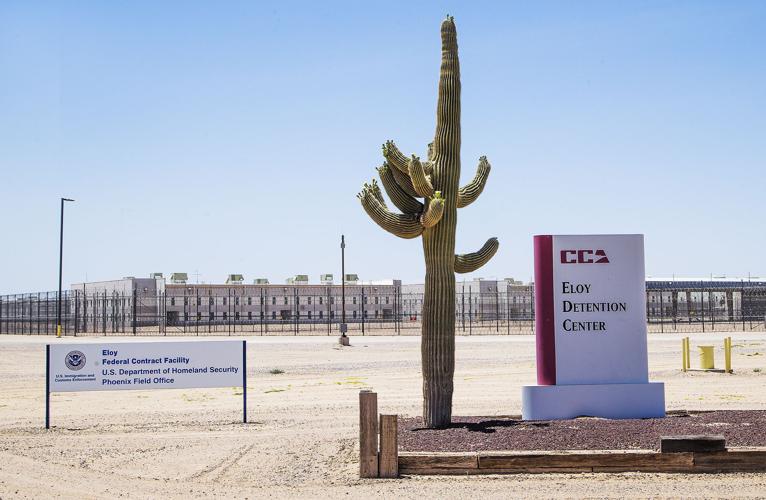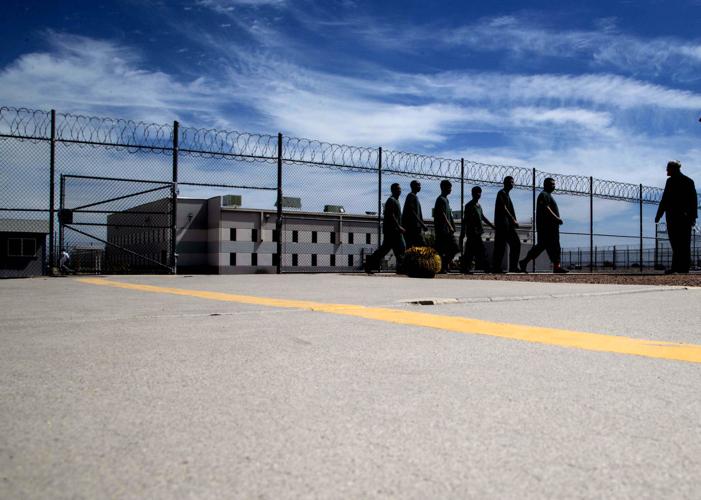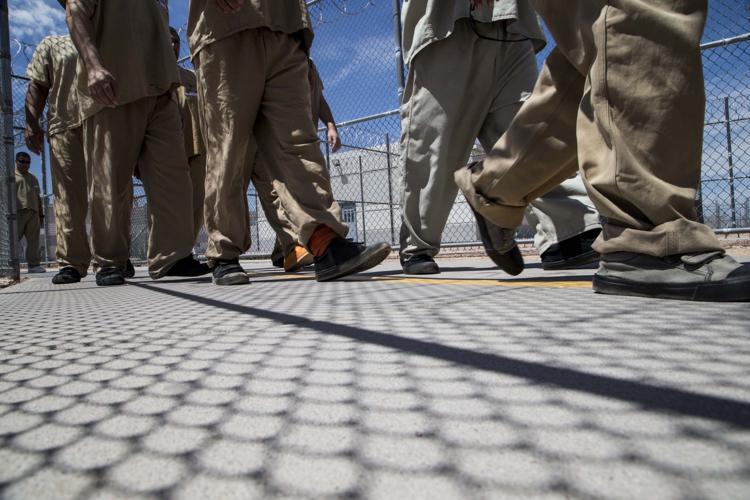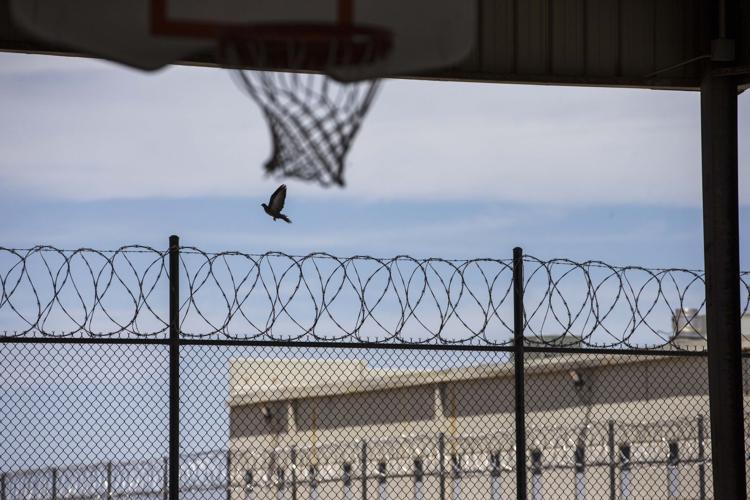Taxpayers started footing the bill for housing Ivan Moreno Miranda shortly after a Border Patrol agent caught him on Jan. 14.
Moreno Miranda crossed the border illegally near Douglas after being deported in 2013, federal court records show. The U.S. Attorney’s Office filed criminal charges against him and on Jan. 17 he was placed in the custody of the U.S. Marshals Service while his case unfolded, at a daily detention cost of about $80.
The cost of detaining Moreno Miranda kept growing until Thursday, when federal Judge Raner C. Collins sentenced him to time served. After four months in the custody of the Marshals Service, the cost of housing Moreno Miranda came to about $9,600.
Those expenses can escalate quickly.
A similar, but longer and costlier, story played out with David Borrayo Fajardo, who was also sentenced Thursday. He was caught in October near Ajo, crossing the border illegally a month after being deported. He had a series of criminal convictions from the early 1990s, including aggravated assault when he was 19 years old, according to a sentencing memorandum.
His attorney needed more time to prepare and the proceedings lasted three months longer than Moreno Miranda’s case, court records show. After seven months in marshals service custody, the cost to house Borrayo Fajardo came to about $16,800.
In the last decade, housing people on immigration-related charges in Southern Arizona cost taxpayers more than $1.8 billion, according to statistics obtained by the Arizona Daily Star through public-records requests.
The Marshals Service spent about $1.1 billion in Southern Arizona housing people on similar charges in fiscal years 2007-15, according to agency records obtained through a Freedom of Information Act request.
More than 90 percent of those funds, or about $1 billion, went to the Central Arizona Detention Center in Florence owned by CoreCivic, formerly known as Corrections Corporation of America.
U.S. Immigration and Customs Enforcement spent $760 million detaining people for violating immigration laws in Southern Arizona in fiscal years 2007-16, agency records obtained through a public-records request show.
The Federal Bureau of Prisons is housing 2,825 immigration offenders who were sentenced in Arizona, at an annual cost of $98 million, according to agency statistics obtained through a public-records request. Most of them are housed elsewhere in the country, while 266 are housed in Arizona at an annual cost of $9.2 million.
Arizona sheriff’s departments spent $335 million in fiscal years 2009-16 housing illegal immigrants convicted of breaking state and local laws, according to statistics provided by Cochise County Sheriff Mark Dannels, president of the Arizona Sheriffs Association.
In all, detaining illegal immigrants in Southern Arizona cost taxpayers well over $2 billion in the past decade, not including the costs of the Border Patrol’s holding facilities, where illegal immigrants are held for hours or days after an agent catches them near the border.
ICE saw its annual detention costs in Southern Arizona quadruple during fiscal years 2007-16 to $96 million. Detention costs for the Marshals Service grew by 50 percent to $141 million in fiscal year 2015, the most recent year for which the Star could obtain Marshals Service records.
Those costs could continue to rise as federal agencies put in motion the Feb. 20 directive from Department of Homeland Security Secretary John Kelly to end the policy of “catch-and-release” of illegal immigrants, in which authorities issue notices to appear at removal hearings, rather than take them into custody.
To keep pace with the expected rise in detainees, Kelly directed ICE and U.S. Customs and Border Protection to “allocate all available resources to expand their detention capabilities and capacities at or near the border with Mexico to the greatest extent possible.”
In an April 11 memo, U.S. Attorney General Jeff Sessions directed federal prosecutors in border states to prioritize a variety of immigration-related crimes and to develop guidelines for prosecutions “to accomplish the goal of deterring first-time improper entrants.”
A memo from the U.S. Attorney’s Office describing new plea agreement policies indicates the federal court in Tucson will see more felony prosecutions of immigration-related crimes, such as crossing the border illegally after deportation.
“From a defense attorney’s perspective, it’s job security,” lawyer F. Michael Carrillo said after a hearing in federal court in Tucson. “From a human perspective, it’s a scam. It’s heartbreaking.”
“These are the ‘bad hombres’?” Carrillo continued. For many of his clients, “their criminal history is a bunch of immigration violations.”
What we don’t know
Despite spending $760 million of taxpayer money, ICE declined to allow the Star to tour detention facilities, provide the number of ICE detainees in Southern Arizona, or provide the daily cost to house a detainee.
The Border Patrol did not respond to requests for information about the use of various enforcement tools; where illegal immigrants are sent after leaving Border Patrol custody; or statistics on the agency’s prosecution programs.
The U.S. Attorney’s Office did not respond to a request for information about how prosecutors decide to file criminal charges in immigration-related cases, how those decisions evolved in the last decade, and how new policies affect those decisions.
How it works
Without information from official sources other than the Marshals Service, the Star used interviews with defense lawyers, agency reports, and court records to sketch the outlines of how the immigration detention system works in Southern Arizona.
Illegal immigrants take a myriad of paths through the detention system, but they can be divided roughly into two basic paths: criminal and administrative.
On the path that involves criminal charges, a federal prosecutor decides whether to charge a detainee at a Border Patrol station with illegal re-entry, the legal term for crossing the border illegally after being deported, or another immigration-related crime.
If criminal charges are filed, defendants are taken into custody by the Marshals Service — which Fidencio Rivera, chief deputy U.S. marshal in Arizona, described as the “federal sheriff’s office” — while their cases are prosecuted.
About one-third of the people apprehended by the Border Patrol in the Tucson Sector are charged criminally. For fiscal years 2011-16, about 580,000 apprehensions resulted in about 205,000 prosecutions, according to the Border Patrol’s annual sector profiles.
While Moreno Miranda and Borrayo Fajardo went through a monthslong process of prosecution, thousands more immigration-related cases are handled through fast-track prosecution programs, such as Operation Streamline, and usually are resolved in a matter of days.
After Borrayo Fajardo’s sentencing Thursday to one year in prison, with credit for time served, the Marshals Service will take him to a Federal Bureau of Prisons facility, court records show. The judge recommended he be placed in an institution in or near Arizona.
On the administrative path, Moreno Miranda was sentenced to time served and will not be taken to federal prison. Instead, ICE likely will place him in a detention center while he is processed for deportation.
ICE also takes custody of illegal immigrants when they are released from county jails or after federal prosecutors decline to file criminal charges.
During fiscal years 2007-15, ICE handled 110,000 administrative arrests in Arizona, according to the Department of Homeland Security’s Office of Immigration Statistics.
Detainees can remain in ICE custody for a few days or for many months, depending on whether they choose to appeal their removal order, apply for asylum, or if their country of origin delays in issuing travel documents.
In a separate administrative path, Border Patrol agents use expedited removal, which allows for deportation without involving an immigration court.
A recent report by the Migration Policy Institute on the Border Patrol’s “consequence delivery system” showed about half of the Tucson Sector apprehensions researchers could track in fiscal year 2014 resulted in expedited removal, 26 percent were prosecuted and 12 percent led to voluntary returns and notices to appear.
Where the money went
Statistics provided by ICE showed where detention dollars were spent in Southern Arizona for fiscal years 2013-16, but for previous years the agency provided only annual spending totals.
For the four years with detailed information, ICE spent a total of $167.3 million at the agency-owned facility in Florence, $136.2 million at CoreCivic’s facility in Eloy, $66.8 million at CoreCivic’s facility in Florence and $15.5 million at the Pinal County Sheriff’s Office.
The Marshals Service guarantees payment for 3,420 beds at CoreCivic facilities, Rivera said. The agency also uses 293 beds at the Federal Correctional Institution-Tucson, but does not pay for those beds.
The marshals service also paid $48.6 million in fiscal years 2007-15 to the San Luis Regional Detention Center, near Yuma, operated by Emerald Cos. LaSalle Corrections now owns the facility.
Rivera declined to provide the daily bed rate charged by CoreCivic, citing concerns about competition for the government contract.
However, the Marshals Service’s detention budget submission for fiscal year 2017 showed the average daily jail costs at private facilities was $79.24 in fiscal year 2015, up from $72.88 in fiscal year 2011. The agency expected that rate to have risen to $80.67 in fiscal year 2016 and $82.22 in fiscal year 2017.
The daily cost at the Federal Bureau of Prisons facilities comes to $88, according to calculations included in presentence reports in immigration-related cases.
CoreCivic has come under fire for 15 in-custody deaths at the Eloy Detention Center since 2003 and immigrant-rights activists decry a profit-making motive behind incarceration.
CoreCivic did not respond to a request for comment. But Rivera said the company’s facilities are the only places that can handle the volume of detainees handled by the Marshals Service.
“We couldn’t do our jobs without them,” Rivera said.
The company also saved the agency money by building a medical facility, Rivera said, which helped avoid the costly practice of sending deputy marshals to guard inmates at local hospitals.


